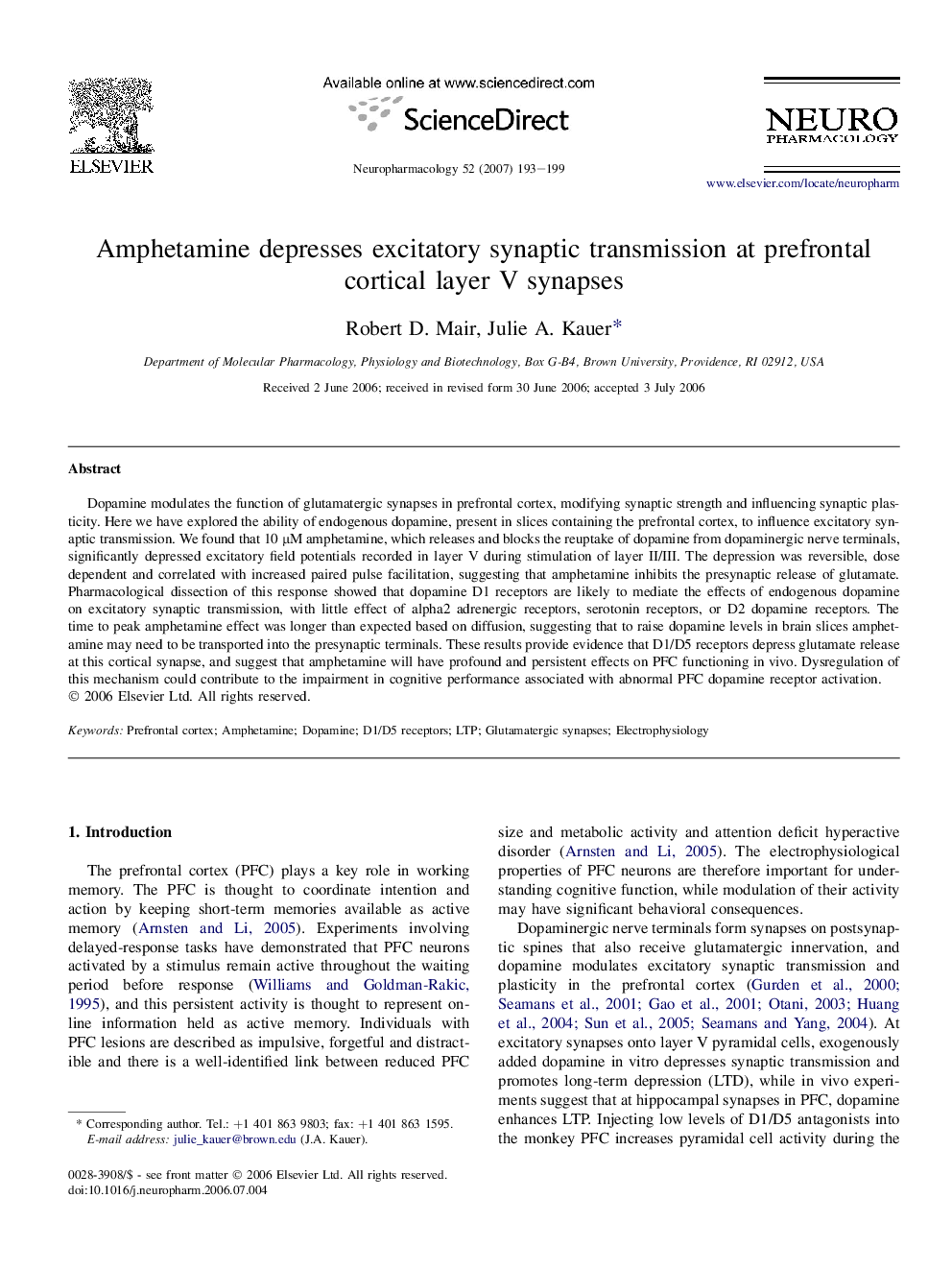| Article ID | Journal | Published Year | Pages | File Type |
|---|---|---|---|---|
| 2494986 | Neuropharmacology | 2007 | 7 Pages |
Dopamine modulates the function of glutamatergic synapses in prefrontal cortex, modifying synaptic strength and influencing synaptic plasticity. Here we have explored the ability of endogenous dopamine, present in slices containing the prefrontal cortex, to influence excitatory synaptic transmission. We found that 10 μM amphetamine, which releases and blocks the reuptake of dopamine from dopaminergic nerve terminals, significantly depressed excitatory field potentials recorded in layer V during stimulation of layer II/III. The depression was reversible, dose dependent and correlated with increased paired pulse facilitation, suggesting that amphetamine inhibits the presynaptic release of glutamate. Pharmacological dissection of this response showed that dopamine D1 receptors are likely to mediate the effects of endogenous dopamine on excitatory synaptic transmission, with little effect of alpha2 adrenergic receptors, serotonin receptors, or D2 dopamine receptors. The time to peak amphetamine effect was longer than expected based on diffusion, suggesting that to raise dopamine levels in brain slices amphetamine may need to be transported into the presynaptic terminals. These results provide evidence that D1/D5 receptors depress glutamate release at this cortical synapse, and suggest that amphetamine will have profound and persistent effects on PFC functioning in vivo. Dysregulation of this mechanism could contribute to the impairment in cognitive performance associated with abnormal PFC dopamine receptor activation.
